LATEST INSIGHTS
Business loans come with substantially lower interest rates than personal loans. A secured business loan will usually offer a single-digit interest rate, while personal loans are significantly higher. Another benefit of using fit-for-purpose business finance rather than personal loans is the flexibility in term length they offer. Business loans for SMEs can stretch to 30 years whilst personal loans typically range from 5 to 7 years which dramatically increases the monthly loan repayments.
There are tailored business facilities to meet all your business needs, from$5,000 for simple equipment up to several million dollars for business expansion or purchase.
This piece covers everything you should know about business loans in Australia. You will discover the different types of loans available and learn how to apply for them. The guide also walks you through the required documents and ways to handle your repayments well.
What is a Business Loan in Australia?
Looking to fund your business in Australia? A business loan gives you a well-laid-out way to access capital. The process works through a financial arrangement where a lender gives your business funds that you'll repay with interest over an agreed period.
Definition and Key Components
An Australian business loan has several core components:
- Principal amount (the sum you borrow)
- Interest rates (fixed or variable)
- Repayment schedule (weekly, fortnightly, or monthly)
- Loan term (ranging from 1 month to 30 years)
- Associated fees and charges
Common Types of Business Loans Available
Your business can tap into funding solutions of all types that serve different purposes. Term loans give you lump sum amounts for big investments, while business lines of credit let you draw funds up to a pre-approved limit to assist with cash flow. Equipment finance helps you buy machinery or vehicles, and invoice financing lets you borrow against unpaid invoices.
Secured vs Unsecured Business Loans
The biggest difference between secured and unsecured business loans comes down to collateral. Secured loans need you to provide assets as security, which could include:
- Property
- Vehicles
- Business equipment
Secured loans offer better rates because they're backed by collateral. However, unsecured loans might work better if you need quick access to smaller amounts. Some lenders can approve these loans within 24 hours.
Lenders will look at your business's financial health before approving either type of loan. They check your annual revenue, time in business, and creditworthiness. A solid business plan and financial documentation can boost your application chances, whatever option you pick.
Understanding How Business Loans Work
You need to understand how business lending works to make smart decisions about your company's financial future. Let's see how these loans work in real life.
The Basic Mechanics of Business Lending
Business lending follows a well-laid-out process where you get funds and agree to pay them back with interest. Interest on your loan is calculated daily and usually charged monthly. To calculate your daily interest you multiply the daily interest by the loan balance and then divide this figure by 365. The amount you can borrow depends on your business's financial health. Lenders look at your revenue, cash flow, existing liabilities and commitments, how long the business has been operating and overall creditworthiness.
Interest Rates and Repayment Structures
Changes depending on market conditions and is linked to the Reserve Bank of Australia’s Cash Rate
Consists of a benchmark rate plus margin. Can increase or decrease depending on market movements.
Understanding your repayment obligations is vital. The loan agreement lists:
- Payment frequency (monthly, quarterly, or yearly). For businesses with seasonal income, repayments can sometimes be scheduled to align with the income-producing periods.
- Regular repayment amounts
- Final repayment date requirements
Key Terms and Conditions to Understand
Your loan agreement spells out several significant conditions you need to think about:
- The approved loan amount.
- Interest rate - fixed or variable.
- Default interest - if you fail to make repayments as agreed, the loan agreement will provide a default or penalty interest rate to be applied.
- Fees.
- Payment arrangements.
- Whether you can make extra repayments or pay the loan out early.
- Security - details of the security provided as collateral to secure the loan.
- Guarantees - many business loans will require a General Security Agreement (GSA) which provides that the lender has a security interest in the borrower’s personal property. This provides extra security for the lender. Real property includes land and buildings (immovable) whilst personal property relates to everything else such as equipment and vehicles. Director guarantees may also be required for the loan.
The Business Loan Application Process
A correct business loan application can speed up the approval process. Let's get into what you need to prepare and understand about the application experience.
Recommended Read: A Guide on How to Get a Business Loan in Australia
Required Documentation and Preparation
Your loan application needs several key documents. Australian lenders typically ask for:
- Identification
- Financial statements (2 years)
- Income proof
- Tax returns & BAS statements
- Bank statements
- Business plan
- Credit history
- Cash flow projections
Credit Assessment Criteria
Lenders assess your application using the four Cs of credit:
- Character: Your business experience and credit history
- Capacity: Your ability to repay the loan
- Collateral: Assets available to secure the loan
- Capital: Your overall financial position to support the lending
Your credit assessment looks at both personal and business aspects. Lenders assess your business's financial health and credit history as well as your personal creditworthiness.
Timeline from Application to Funding
Business loan processing times vary based on several factors:
Traditional bank loans may take 2-6 weeks, while online lenders might approve loans within 24 hours. The total timeline depends on:
- The purpose of the lending. A business purchase will take much longer than an overdraft application for an existing business due to the complexity of the transaction.
- Your chosen lender type
- Your documentation readiness
- The loan amount and purpose
Traditional bank loans follow this general timeline:
- Application submission and document gathering
- Underwriting and assessment phase
- Final approval and loan offer
- Fund disbursement (2-5 working days after approval)
Note that incomplete applications or missing documents can extend these timelines. Your documentation should be accurate and up-to-date to speed up the process.
Managing Business Loan Repayments
A solid understanding of your obligations and proactive planning will help you manage your business loan repayments successfully. Managing repayments might feel overwhelming at first, but the right strategies make it easier to handle.
Understanding Your Repayment Obligations
Your loan agreement spells out specific repayment terms you must follow. The key to managing your business loan starts with accurate forecasting of monthly obligations and predicting future cash flow that ensures sufficient means for repayments.
Here's what your repayment structure has:
- Principal and interest calculations
- Payment frequency options
- Late payment penalties
- Early repayment conditions
Strategies for Successful Loan Management
Automatic payments help you avoid missed deadlines and potential late fees. Making extra payments during peak earning seasons can reduce your overall loan burden effectively.
Dealing with Financial Challenges
Financial difficulties may arise, but you have several ways to handle them. Missing a repayment can lead to late fees and damage your business and personal credit score. If you expect challenges in meeting your repayment obligations, proactive communication with your lender is vital. Remember, bad news never gets better with time.
These approaches work well for managing financial difficulties:
- Forecasting income and expenses to ensure sufficient cash flow
- Building a financial cushion for unexpected expenses
- Maintaining open communication with your lender
- Learning about flexible repayment options
Your lender might offer these solutions if you struggle with repayments:
- Temporary payment reductions
- Loan term extensions
- Debt restructuring options
- Fee concessions
While reduced payments provide temporary relief, you'll need to make up the difference later. Keep a close eye on your cash flow and stay in regular contact with your lender until you establish a solid repayment routine.
Calculating Affordable Loan Amounts
Steps to calculate an affordable loan amount:
- Review your current income and expenses – Ensure your business generates enough profit to cover potential loan repayments.
- Forecast future cash flows – Consider projected revenue and seasonal variations that might impact repayment ability.
- Calculate your Loan-to-Value Ratio (LVR) – For secured loans, LVR measures the loan amount as a percentage of your asset's value. To calculate:
- LVR (%) = (Loan Amount ÷ Asset Value) × 100
Example: If your loan amount is $100,000 and your asset (e.g., property) is valued at $200,000, your LVR is 50%. Lower LVRs typically mean less risk for lenders, which can lead to better loan terms.
- Determine maximum affordable repayments – Use cash flow forecasts to ensure repayments won’t strain operations. Some businesses align repayment schedules with peak revenue periods to improve affordability.
Evaluating Different Lender Options
Each lender's requirements help you pick the most suitable option for your business. Different lenders typically offer:
When analysing lender options, focus on:
- Interest rate structures
- Loan terms and conditions
- Processing timeframes
- Documentation requirements
Secured business loans will give you better interest rates than unsecured options. You should weigh this advantage against the risk of offering assets as security.
Your unique situation will point to the right choice. Your business's size, trading history, location, and budget limits play vital roles in this decision. A strong, current business plan should clearly show your fund usage and repayment strategy.
Note that each loan type has different tax and GST implications, so check the product disclosure information before applying. A business adviser or accountant can help you make an informed decision about your business's financial future.
Partnering with Synergy Business Finance
Understanding business loans is important, but going through your options doesn’t have to be complicated. Synergy Business Finance simplifies the process by matching you with funding solutions that fit your goals.
What makes us unique? We partner with Synergy Accountants to provide a holistic service. This means you’ll have expert guidance in securing finance and managing your business’s broader financial needs.
Whether you’re managing cash flow or planning for growth, we’ll guide you through the details and help you make informed decisions. Focus on your business—let us handle the finances.








